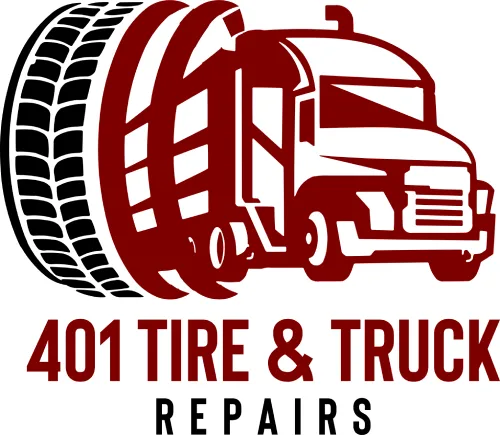Modern trucks are reliable, but they telegraph trouble long before a breakdown. If you know the signals, you can schedule service before a small issue becomes an expensive repair. This guide lists clear, practical signs that it’s time to book a full diagnostic check and explains what that check includes. When you need a thorough, unbiased read of your truck’s health, 401 tire and truck repairs can run the tests and give you straight answers.
What a “full diagnostic” actually covers
A proper diagnostic session is systematic. It is not just reading a code and swapping parts. A complete session should include:
- Electronic scan of all modules: engine, transmission, ABS, airbag, body, TPMS, emissions, and more.
- Freeze-frame data review to see the exact conditions when faults set.
- Live data analysis for sensors, actuators, fuel trims, temperature, voltage, pressure, and commanded states.
- Basic mechanical checks: vacuum, compression (as needed), leak checks, and visual inspection for wear, leaks, and corrosion.
- Charging and starting system testing: battery, alternator output, parasitic draw.
- Road test with a technician to reproduce symptoms.
- Report and plan: verified causes, not guesses, plus a repair path.
This is the workflow you can expect from 401 tire and truck repairs. Clean process. Clear results. No guesswork.
Signs you should book diagnostics now
1) Dashboard warning lights that keep returning
A light that blinks on and off is not “fine.” It is intermittent, which is harder on components. Prioritize:
- Check Engine Light (MIL): Solid means a stored fault. Flashing means misfire severe enough to damage the catalytic converter.
- ABS/Brake: A single wheel sensor or module issue can disable stability control. Stopping distances increase.
- TPMS: Pressure drop or sensor failure. Both deserve attention.
- Charging/Battery: Possible alternator, belt, or battery issue.
- DEF/Emissions/Urea lights (diesel): Ignoring can trigger limp mode or no-start countdown.
If a light recurs after reset, stop resetting. Schedule a full check at 401 tire and truck repairs.
2) Hard starts, slow cranking, or repeated jump-starts
Hard starts point to weak batteries, corroded terminals, failing starters, glow-plug problems on diesel, or fuel delivery issues. Diagnostics isolate whether you have a supply problem (fuel/air), a spark/heat problem (ignition or glow), or a power problem (battery/alternator). Waiting risks stranding the truck and corrupting module memory if voltage dips during key cycles.
3) Sudden drop in fuel economy
A consistent, measurable decline that is not explained by heavy loads or strong headwinds suggests:
- Stuck-open thermostat (cool engine = rich mixture)
- Failing oxygen sensors or MAF sensor
- Dragging brakes or low tire pressure
- Clogged air filter or intake leaks
- Weak injectors or poor atomization
Live data and road testing reveal which system is responsible.
4) Noticeable power loss, especially under load or on grades
If the truck feels fine empty but weak when towing or climbing, focus on:
- Fuel delivery limits: clogged filter, weak pump, restricted lines
- Turbo and boost leaks (diesel and some gas): torn charge hoses, leaking intercoolers, sticky vanes
- Exhaust restriction: failing catalytic converter or DPF loading
- Timing and sensor drift: cam/crank correlation faults, knock retard
A full diagnostic includes boost tests, fuel pressure checks, and exhaust backpressure readings to pinpoint the bottleneck.
5) Harsh shifts, slipping, or delayed engagement
Transmission control units react to sensor data from the engine, wheels, and the transmission itself. Symptoms:
- Flare between gears or RPM surge
- Shudder at specific speeds
- Delayed Reverse/Drive engagement when cold
- Limp mode with limited gears
Scan data shows fluid temperature, commanded gear, line pressure, and slip values. Combined with fluid inspection and a road test, you find whether the fix is electronic, hydraulic, or mechanical. Get this done early. Heat and slip shorten a gearbox’s life.
6) Braking feels different
Longer pedal travel, a pull to one side, pulsation at the wheel, or new grinding noises all need investigation. A diagnostic check will:
- Read ABS wheel speeds and activity during a stop
- Inspect pads, rotors, drums, calipers, and hoses for wear or sticking
- Measure brake fluid moisture and boiling point
Stopping performance is a safety system. Do not defer.
7) New steering play, wander, or vibration at speed
Steering and suspension issues escalate tire wear and reduce control. Typical flags:
- Play or clunk over bumps
- Wander that requires constant correction
- Speed-specific vibration that appears between 80–105 km/h
- Uneven tire wear like cupping or feathering
Diagnostics combine a front-end inspection, tire balance check, and sometimes a road-force test to distinguish wheel, tire, bearing, joint, or alignment causes. 401 tire and truck repairs handles the tire and chassis sides in one visit.
8) Irregular tire wear or frequent TPMS alerts
Repeated pressure warnings or patterns like inner-edge wear signal alignment or suspension issues. Consistent low pressure can also mean a cracked wheel, puncture, or a corroded bead seat. A diagnostic visit verifies leaks, checks sensors, measures tread depth across the tire, and documents alignment angles.
9) Excess smoke or new exhaust smell
Exhaust tells the story:
- Blue smoke: oil burning from turbo seals, valve guides, or rings
- Black smoke (diesel or gas under load): rich mixture, boost leaks, or EGR issues
- White smoke on warm engine: coolant intrusion or unburned fuel
- Sharp fuel odor: leaks near rail or injectors
- Sulfur/rotten-egg smell: catalyst stress or over-rich condition
A smoke test, fuel trim analysis, and DPF/NOx efficiency checks identify root cause.
10) New noises: knocks, ticks, chirps, squeals
Use location and rhythm:
- Chirp with RPM: belt, idler, or alternator bearing
- Tick at idle, louder warm: lifter or exhaust leak
- Deep knock under load: bearing or severe detonation
- Growl that changes with speed: wheel bearing
- Metallic grind when braking: pad at backing plate
Mechanics correlate sound with data: misfire counts, timing advance, knock activity, wheel-speed harmony, and more.
11) Persistent overheating or slow warm-up
Temperature out of range harms engines. Overheating may be a failing water pump, stuck thermostat, clogged radiator, or head-gasket leak. Slow warm-up indicates a stuck-open thermostat. A full check uses pressure tests, chemical tests for combustion gases in coolant, and scan readings to confirm coolant flow.
12) Electrical gremlins and accessory failures
Intermittent windows, dim lights, radio resets, or odd cluster behavior often trace to low voltage, poor grounds, water intrusion, or module faults. Diagnostics measure voltage drop under load and parasitic draw. The fix can be as basic as a cleaned ground or as involved as harness repair.
13) After a major event
Schedule diagnostics after any of these events even if the truck seems fine:
- Deep water crossing or flood exposure
- Minor collision or curb strike
- Long storage or jump-start event
- New-to-you used truck purchase
- Major towing trip in heat or mountains
Hidden damage and heat stress do not show up right away. A quick, complete check protects you.
Diesel-specific signs you should not ignore
- Hard cold starts even with good batteries: possible glow-plug circuit or compression issue.
- Frequent regens or DPF warning: soot loading, EGR performance, or sensor drift.
- Low boost or surge under heavy throttle: leaks, sticky VGT, or weak actuator.
- DEF consumption changes or quality warnings: contamination or dosing faults.
401 tire and truck repairs can verify DPF backpressure, check EGT sensors, and confirm DEF quality before parts are replaced.

